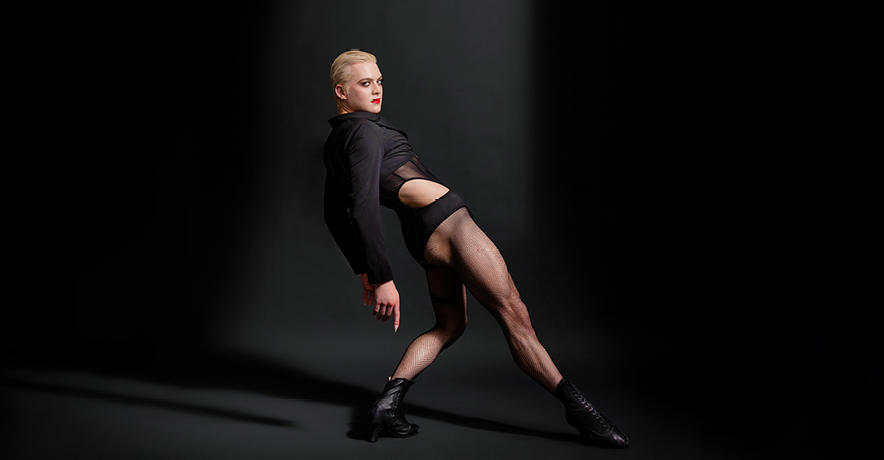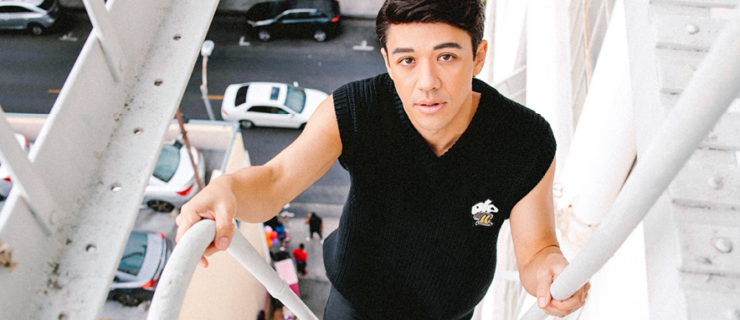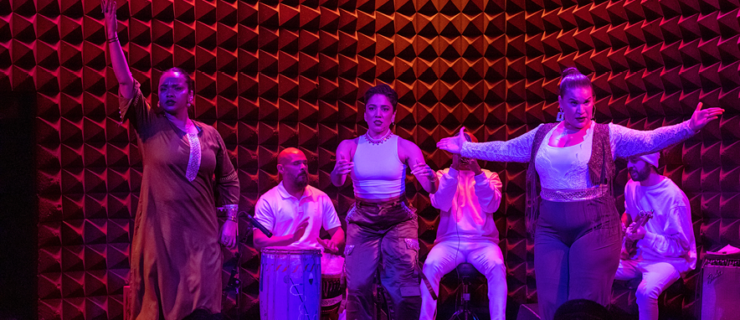Kolton Krouse Blazes Their Own Trail On Broadway and Beyond
In a way it feels wrong to single out one performer, or one number, from Bob Fosse’s DANCIN’. The revamped take on Fosse’s 1978 revue—which ended its Broadway run (too soon) in May—gave each of its 22 talented dancers plenty of meaty material from the Fosse canon, a smorgasbord of star-making moments.
That said: We need to talk about Kolton Krouse. Specifically, we need to talk about Kolton Krouse in the Trumpet Solo.
The solo arrived in the middle of “Sing, Sing, Sing,” DANCIN’s second-act opener, set to music made famous by Benny Goodman. A virtuosic three-minute wiggle originally created for Ann Reinking, it requires a finely calibrated combination of introspection and extroversion—“like you’re in a back room dancing for yourself in the mirror,” Krouse says. In the wrong hands (and, especially, legs), it can wilt. But Krouse teased and tickled and va-va-voomed it into full flower. By the solo’s climax, the audience was eating from the palms of Krouse’s impeccably manicured hands.
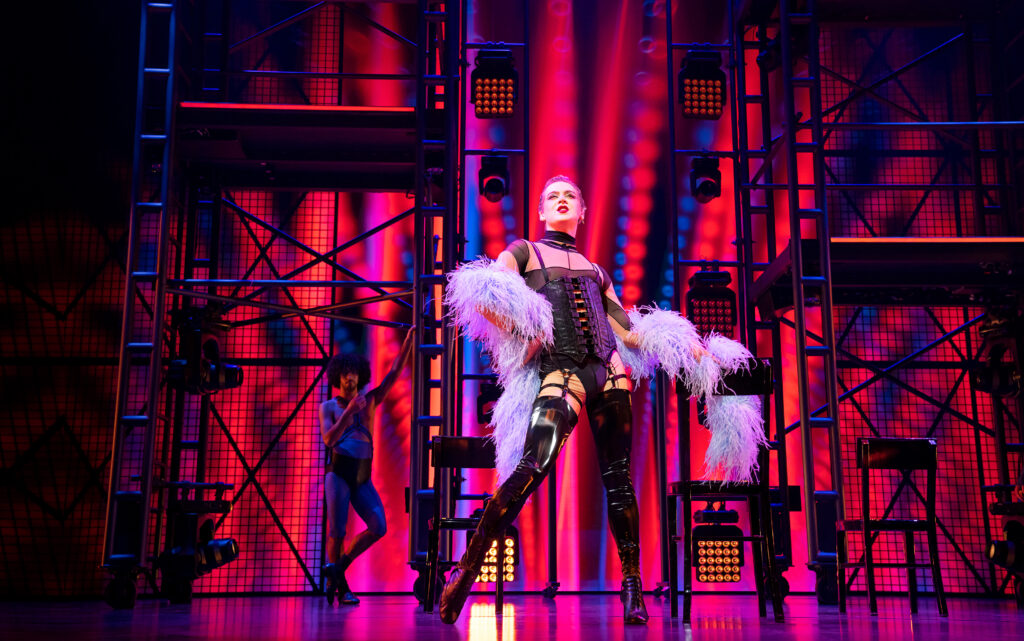
“Trumpet Solo needs an artist who can play outside of the boundaries of the steps,” says DANCIN’ cast member Dylis Croman, a Fosse veteran who memorably performed the number in the 2002 recording of Fosse. “You immediately feel that Kolton has that freedom and joy, that sense of fun, like a tiger getting ready to pounce. And let me just say: Their kick layouts are outlandishly good.”
The list of artists who’ve tackled the Trumpet Solo is short—and before Krouse, it featured only cisgender women. In DANCIN’, 27-year-old Krouse, who is nonbinary, performed the routine as part of a track that included roles in both heels and flats. (Their other big solo, “Spring Chicken,” used some of the “Mein Herr” choreography immortalized by Liza Minnelli in Cabaret.) It was a significant step toward inclusivity that also felt natural. Fosse asked dancers to be themselves onstage; DANCIN’ simply showed Krouse as Krouse.
“The thing about Kolton is that they are truly comfortable in their skin, which is what Bob always wanted,” says DANCIN’ director Wayne Cilento, who performed in the original 1978 production. “And that actually made it really easy to figure out the tracking. Like the Trumpet Solo: The question was, who was the best person in the room to do it? Kolton was the one.”
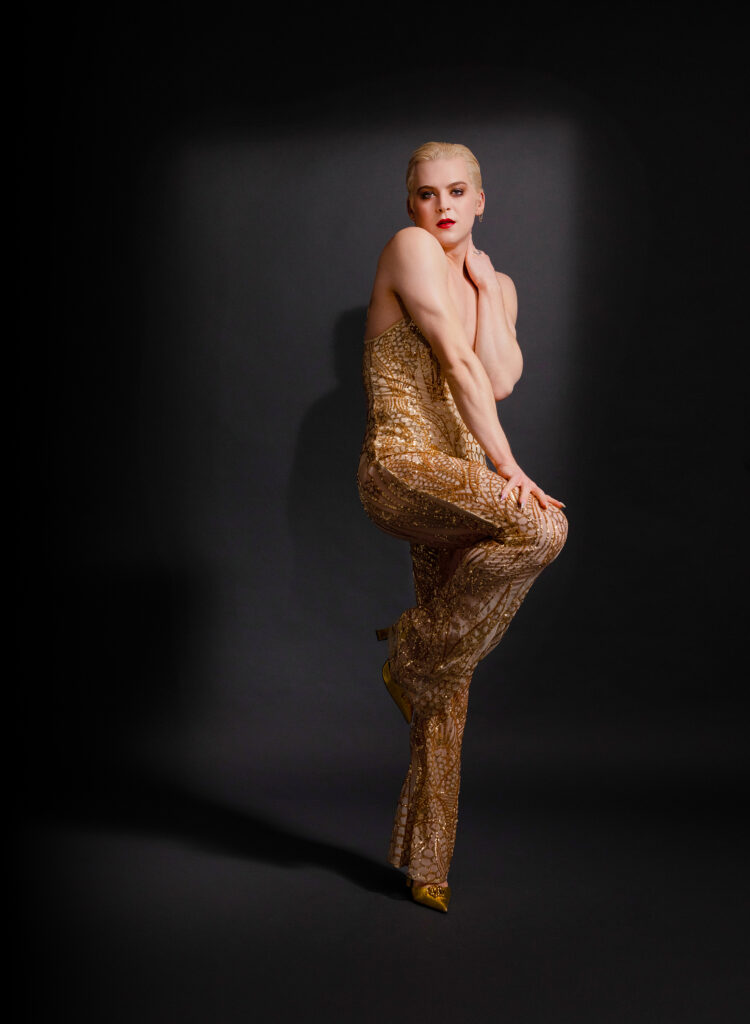
Krouse’s secure sense of self has been evident from a young age, bolstered by well-founded confidence in their own talent. A star of the dance competition and convention circuit, they became the first four-time National Outstanding Dancer at New York City Dance Alliance, winning the Mini title in 2007, Junior in 2009, Teen in 2012, and Senior in 2014. There were bullies in their conservative Arizona hometown, but Krouse largely shrugged them off. “My feeling was, this is such a small chunk of our lives,” they say. “Sure, you can yell at me. But pretty soon, I’m going to get out of here, and you’re probably going to stay in Arizona, and, you know—bye.”
As a student Krouse felt the pull of New York City, which had “an energy that made me feel like I belonged,” they say. Looking for ways to channel that energy, they enrolled at The Juilliard School.
They admired the abstract concert dance repertory that shaped much of Juilliard’s curriculum. But soon they realized that what they really wanted to do was tell stories. “I started to focus on the idea of Broadway because it brought all the pieces together—the acting, the movement, everything I loved best,” Krouse says. They also had a difficult time with the school’s culture. “I got this sense that in order to become an artist, they had to break you down and then build you back up, which was not it for me.”
So Krouse was ready to leap when they heard that Andy Blankenbuehler, an acquaintance through NYCDA, was choreographing a Broadway revival of CATS. Though Krouse initially asked to audition just for the experience, they ended up booking the show. They spent their sophomore year doing double duty: full-time Juilliard student by day, Broadway feline by night.
The show—and the (ill-starred) 2019 film, which Krouse booked some months later—marked both a professional and a personal turning point for Krouse. Wearing the full-face CATS makeup every day opened the door to further play with cosmetics, nail art, and fashion; playing a creature rather than a person allowed them freedom to explore the feminine qualities that had always been part of their dancing.
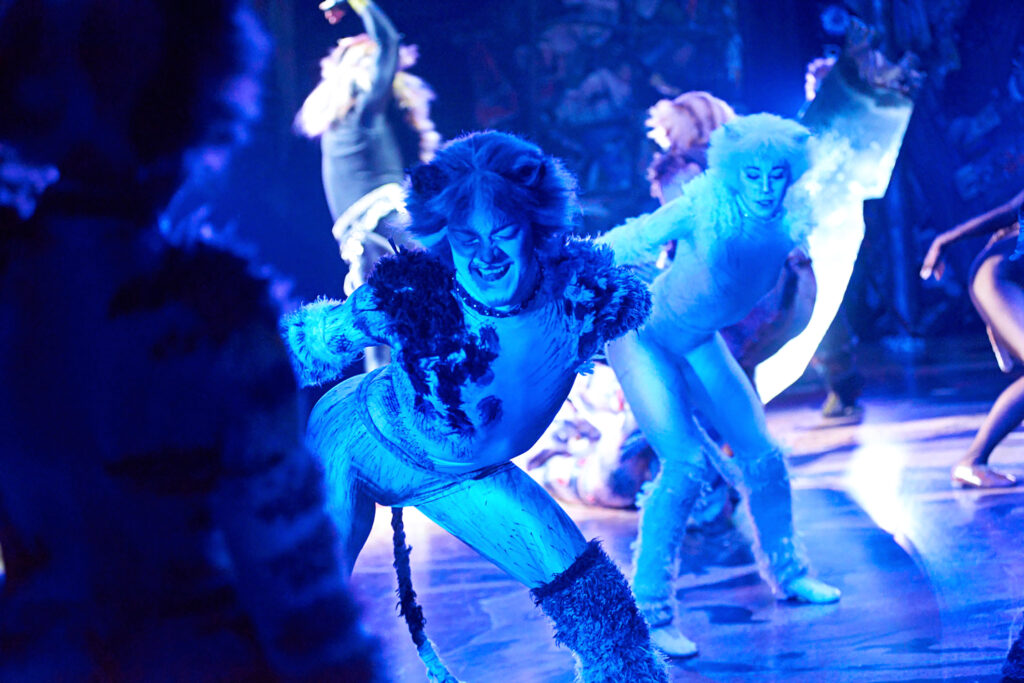
“I started to think about, Who is Kolton Krouse?” they say. “After a lot of experimenting, everything morphed into this androgynous situation—the masculine and the feminine all bled into each other, in my dancing and offstage, too. And that’s when I found Kolton.”
Krouse dropped out of Juilliard in their senior year, after they were denied a deferral to accommodate the CATS film’s production schedule. They landed a few more high-profile commercial dance jobs—including, in a bit of foreshadowing, the FX series “Fosse/Verdon.” Finding another Broadway role proved more difficult. “It was really hard to get into the room as me,” Krouse says. “There were a couple projects where they said, ‘No, you can’t show up in makeup and heels.’ It felt like a constant battle.” Frustrated, they switched agencies in search of better support.
When COVID-19 shut the world down, Krouse moved back to Arizona and drifted—not not intentionally—away from dance. “I just figured I’d take the time to work on other things I’d always been curious about,” they say. They explored voice training and songwriting with the musician Mario Spinetti, a longtime friend, recording covers and filming music videos for fun. Watching Nathan Chen and Yuzuru Hanyu compete at the 2021 World Figure Skating Championships re-sparked Krouse’s childhood figure-skating dream, previously snuffed out by dance commitments. They started taking classes; a teacher channeled them toward ice dancing, where, unsurprisingly, they excelled. (You can see skating’s influence in their dancing today: the way they throw themselves up into a saut de basque as if it were an axel, the way they wrap their foot in coupé to increase their turning speed.)
In the fall of 2021, as theaters began to reopen, Krouse got the call for the DANCIN’ audition. “I was like, Bob Fosse? Yes. Immediately, yes,” they say. They’d grown up watching Cabaret, and had loved learning the nuances of Fosse style on “Fosse/Verdon.” “With Fosse, the intention is always so clear,” they say. “Even in more abstract pieces, it’s almost like a silent movie—the audience understands what the people they’re watching are feeling or thinking, and sees them as humans instead of characters.”
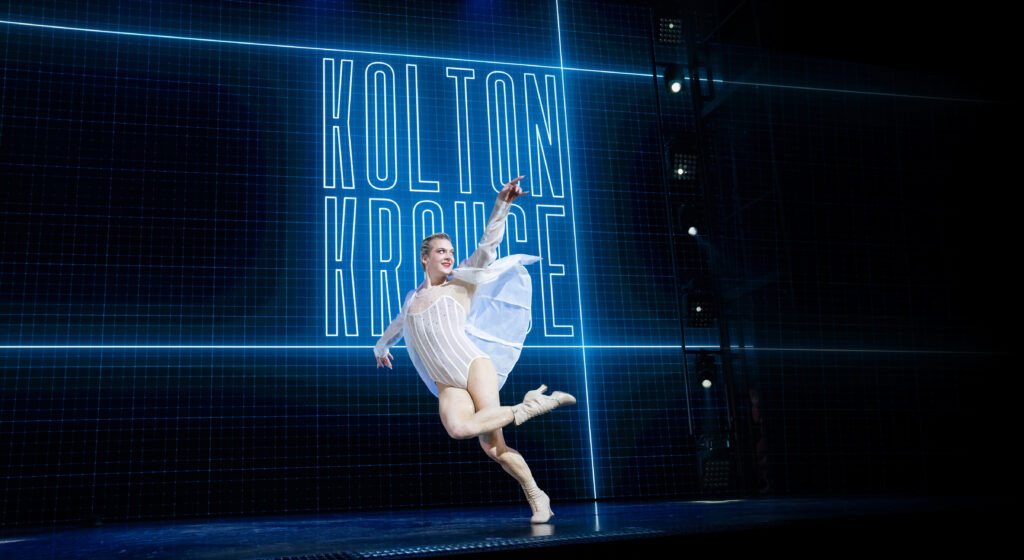
That emphasis on the humanity of the performers feels consistent with a more flexible approach to gender. “Bob was very forward-thinking in that way,” says Corinne McFadden Herrera, DANCIN’s associate director and musical stager, who also helped with choreographic reconstruction. “Already in Cabaret, in the ’60s and ’70s, he was creating characters with an androgynous fluidity.” The DANCIN’ team didn’t seek out gender-nonconforming performers or plan to cast roles against gender “type,” but they embraced the fullness of Krouse’s identity—and skill set.
“If Bob had had a Kolton in his life, he would’ve loved it,” Cilento says. “He would never have hidden that talent.”
Though the show made little fanfare about its casting choices, it sat at the middle of a conversation unfolding across Broadway about how the industry can better include nonbinary performers. Onstage celebrations of artists like Some Like It Hot’s J. Harrison Ghee and & Juliet’s Justin David Sullivan belie ongoing concerns about gendered awards-show categories and casting processes.
“I think change could be coming, and I think it’s definitely getting better with certain directors and choreographers, but it’s still really tricky,” Krouse says. They’ve been unsure, for example, about how to navigate recent calls for “female-presenting” and “male-presenting” performers. Usually they end up essentially auditioning twice.
“If it feels right, you can show them the combo in a heel and then the second time do it in a flat,” they say. “It’s hard. But if they’re not allowing space for you, you have to make space for yourself.”
Eventually, Krouse hopes to carve out space in other fields, too. They’re still studying voice, and plan to return to skating at some point. You might see them onscreen someday, acting in a horror film (“Wouldn’t that be incredibly fun?”) or a superhero movie (“I could do all the stunts”). And they hope to walk in fashion week—a dream that, for a person seemingly born to wear heels, feels eminently attainable.
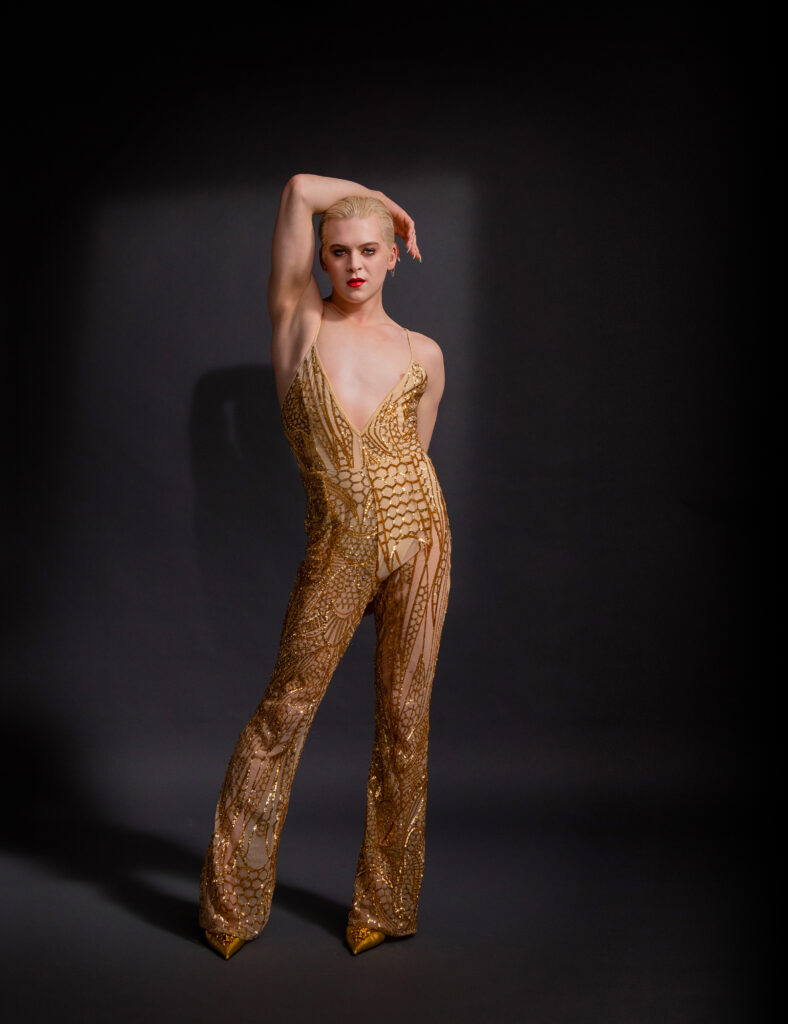
The DANCIN’ cast included some of the best movers on Broadway, yet Krouse was repeatedly singled out by critics. (The New York Times review called them “the one with the face-slapping kicks,” an epithet since featured in Krouse’s Instagram bio.) That attention, Krouse says, was a nice surprise. But they were more excited about the visibility than the praise.
“Honestly, I wouldn’t even have cared if everyone hated it, as long as I could connect with that one person who hadn’t seen themselves onstage before,” they say. “What I really want for my art is for people to come away from it saying, ‘That makes me want to be more me.’ ”
